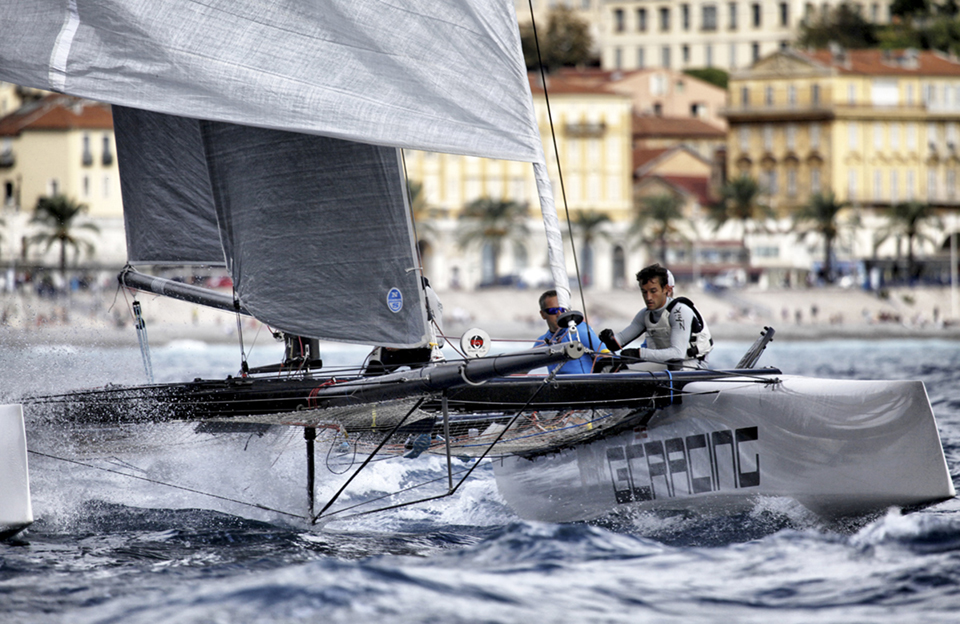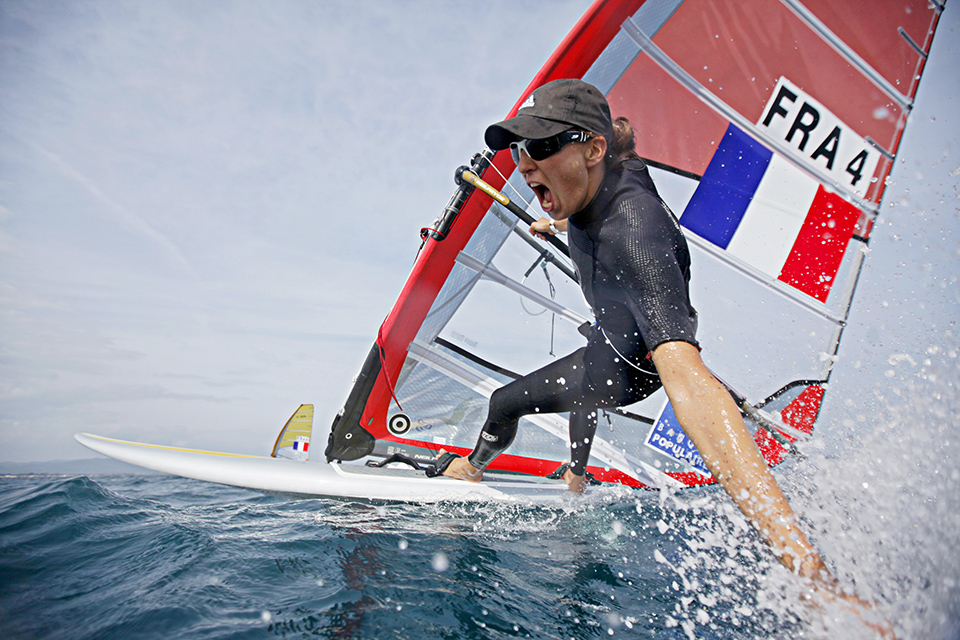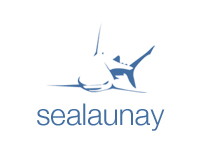 A new chapter opened for the GC32s last week when they joined the Extreme Sailing Series for the penultimate Act of the Land Rover-backed 2013 stadium sailing catamaran circuit in Nice, France.
A new chapter opened for the GC32s last week when they joined the Extreme Sailing Series for the penultimate Act of the Land Rover-backed 2013 stadium sailing catamaran circuit in Nice, France.
While the main attraction remains the Extreme 40 catamaran racing, the Series events are slowly evolving into mini sailing festivals, with multiple attractions, rather than just one. Thus on Nice’s Baie des Anges each day between 1000 and 1300, racing between the two GC32s – Laurent Lenne’s SPAX Solution and Flavio Marazzi’s Marwin – has been a warm-up act for the Extreme 40s.
Amsterdam-based Frenchman Laurent Lenne, the GC32’s creator, explains what being in Nice means: “The association with the Extreme 40s is an important endorsement: to be accepted as a good enough class to join them and be part of the spectacle. It showed what the possibilities are, being alongside the Extreme 40s, because we both race catamarans and have a similar vision. It is just different formats.”
While the boats are different, the GC32 courses are longer than the ultra-short ones the Extreme 40s sail, but they still have a turning mark immediately off the VIP tent on Nice’s Promenade des Anglais.
For both Lenne and Extreme Sailing Series organisers OC Sport, Nice has been a ‘toe in the water’ exercise, which may lead to the GC32s joining more ESS events in Europe next year.
Full throttle
Sailing on the Cote d’Azur in the autumn usually means light winds, but on this occasion crews have been challenged by 20+ knot winds and a large and short sea. Nonetheless the GC32s performed well.
“There’s been a lot of wind, so there have been some challenges out there,” said Lenne. “We were bearing away in 25 knots and the boat was fully flat going 28-29 knots and passing through the waves very well. It feels very safe. But we designed the boat to be able to handle these conditions, to be able to go through this sea state, both upwind and downwind. We are very happy with it.”
A design from New Caledonia-based catamaran guru Martin Fischer and built by Premier Composite Technologies in Dubai, the GC32 is a state of the art catamaran, with buoyant bows, but it is the double-S profile daggerboards and L-shape rudders that ensure she behaves well in stronger conditions.
As Andrew Macpherson, Chief Operating Officer for the GC32, observes: “There have been some ‘moments’ as you’d expect in 20+ knots and two metre seas, but the comment from all the crews is that with a reef in above 20 knots they feel totally safe. You could still throw it around and do your turns upwind and down. And going downwind the bows are completely clear of the water which allows you to push harder.”
Despite the lively conditions on the first two days, racing between the one design catamarans has been tight, with the starts proving vital and the boats regularly overtaking each other on both the upwind and downwind legs. At the end of Saturday SPAX Solution and Marwin were tied on 5-5.
Lenne commented: “It’s been really close – up and down all the time. We have had some really good racing, good starts, crossing each other all the time, upwind and downwind. It’s full on. Not easy.”
Mathias Buhler, an Olympic Nacra 17 catamaran sailor who stood in for Flavio Marazzi helming Marwin on Saturday added: “We were both overtaking each other. It was nice racing. Today, conditions were very tricky, especially in the first race. But we were lucky – the forecast was pretty light, but in the end only the first race was in bad conditions. All the other races were fair.”
Sunday dawned to extremely light winds. But with the GC32 only requiring a minimum of 3 knots of wind for racing, the two boats were able to compete in the 5-6 knot offshore breeze, coping happily with a difficult, left-over chop from the windy days. Where the teams were so matched in performance the previous day, in the softer breeze Marwin’s accurate positioning at the start put them at a strong tactical advantage as they cruised away to five straight victories on Sunday.
“An amazing day,” said Buhler, buzzing from his dominant performance on Sunday. “I can’t wait for the next event, provided Flavio [Marazzi] lets me out to play again!”
In Nice, the GC32 racing has been broadcast live to the internet via Livestream, which Lenne says is also an important part of the circuit’s offering. Meanwhile he is soon to appoint a Class Manager for the GC32 and is in the process of negotiating with event organisers to finalise the 2014 calendar for The Great Cup, the circuit for the GC32s.
A successful America’s Cup held in catamarans has helped. “We’ve seen a big difference since July. I had some meetings before then with people who were saying, ‘yes, maybe we’ll have catamarans in two or three years’. Now they are coming back telling me they want to move towards catamarans now! The live streaming is also very appealing. We have on board cameras and we can do interviews on the boats. That is good for the class.”
Words: Sailing Intelligence
Photo assignment for The Great Cup.
→ view full related gallery
No Comments — Adventure / Aquatic / Design / Multihull / Onboard / Performance / Racing / Regatta / Sport / Travel / Water / Yachting
 Voilavion is a new foiling catamaran that is performant but incredibly stable and easy to handle.
Voilavion is a new foiling catamaran that is performant but incredibly stable and easy to handle.


 A new chapter opened for the GC32s last week when they joined the Extreme Sailing Series for the penultimate Act of the Land Rover-backed 2013 stadium sailing catamaran circuit in Nice, France.
A new chapter opened for the GC32s last week when they joined the Extreme Sailing Series for the penultimate Act of the Land Rover-backed 2013 stadium sailing catamaran circuit in Nice, France.







